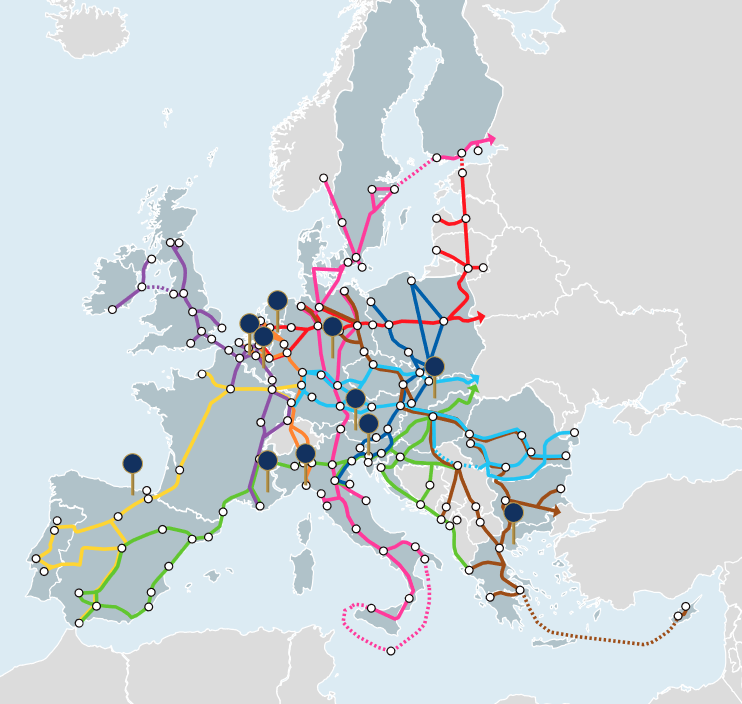A European FEderated Network of Information eXchange in Logistics

FENIX was a 4 year long Connecting Europe Facility (CEF) project aiming to support the development, validation and deployment of the digital information systems along the EU transport Core Network.
There were 43 partners from 11 European countries in FENIX representing the logistics community of shippers, logistics service providers, mobility infrastructure providers, cities, and authorities.
11 pilot sites in 9 European countries further developed the work conducted under Living Labs in AEOLIX and SELIS projects by structuring the actors and services according to corridors.
Objectives
FENIX aimed to develop the first European federated architecture for data sharing serving the European logistics community of shippers, logistics service providers, mobility infrastructure providers, cities, and authorities in order to offer interoperability between any individual existing and future platforms.
The idea of FENIX came from the work and recommendations of the European Commission’s Digital Transport and Logistic Forum (DTLF) to create a viable and valid federative network of platforms as enabler for Business to Administration (B2A) and Business to Business (B2B) data exchange and sharing by transport and logistics operators.


ESC's contribution
ESC was involved in two major activities within FENIX:
Activity 4: Pilot Site roll out
Eleven Pilot Sites (PSs) have been established within FENIX, each of them developing so-called Use Cases (UC) in which the use of existing and further developed or newly employed federated networks will be demonstrated.
ESC was active within one of these Pilot Sites, namely the Dutch Pilot Site or ‘SMIP’. ‘SMIP’ stands for 'Smart door-to-door multimodal T&L services across Ten-T corridors'.
The following three Use Cases were developed and agreed in SMIP:
- UC1 – e-CMR: Paperless transport in intermodal transport with focus on road-rail document exchanges.
- UC2 – e-GATE: Novel technologies for enhanced gate-in/out data exchanges at terminal/node.
- UC3 – e-FTI: B2A novel means of digital communication based on eFTI Regulation, DTLFII and ad-hoc TAF TSI JSG activities.
ESC has managed this pilot site activity together with its member evofenedex and the Pilot Site coordinator Van Looveren Consultancy.
Activity 5: Evaluation
ESC was also leader of Sub-Activity 5.4 (Experience and impact assessment). The key objective of this activity was to quantify the impact assessment of the use of federated platforms across the various Use Cases of all Pilot Sites.
The evaluation of the Pilot Sites plays an important role in the 'learning by doing approach' to prepare the next phase for deployment of Logistics & Transport corridor information services across TEN-T corridors based on the federative architecture of platforms of networks.
The difficulty of assessing the impact lied within the quantification and comparing the so-called baseline (present 'As-Is' situation) to the ‘after implementation’ state ('To-Be' situation) when the federated platforms had been implemented. To be able to do so, Key Performance Indicators (KPI) in essential categories had been defined and were ‘measured’ during 'As-Is' and 'To-Be' situations.
Furthermore, an overall assessment framework has been drafted to find a common methodology to assess and quantify the impact of the use of federated platforms under different regional, geographical, legal, and technical constraints.
Different tools were used to evaluate the FENIX implementation, e.g. cost-benefit analysis or multi-criteria-analysis. The underlying difficulty was to find the right overall indicator to assess the impact considering the technical issues, differences in Use Cases, different stakeholder views, different technical solutions, etc.
Further information
For more information, please visit the FENIX website.
